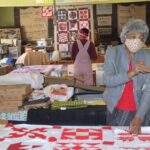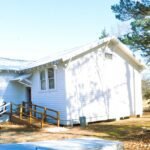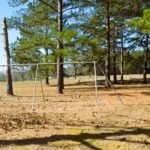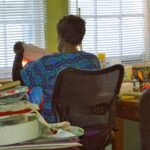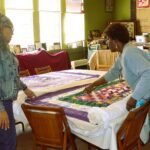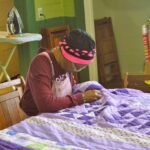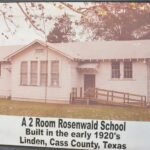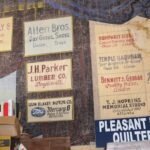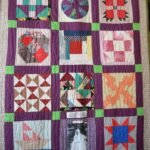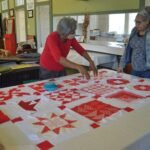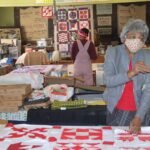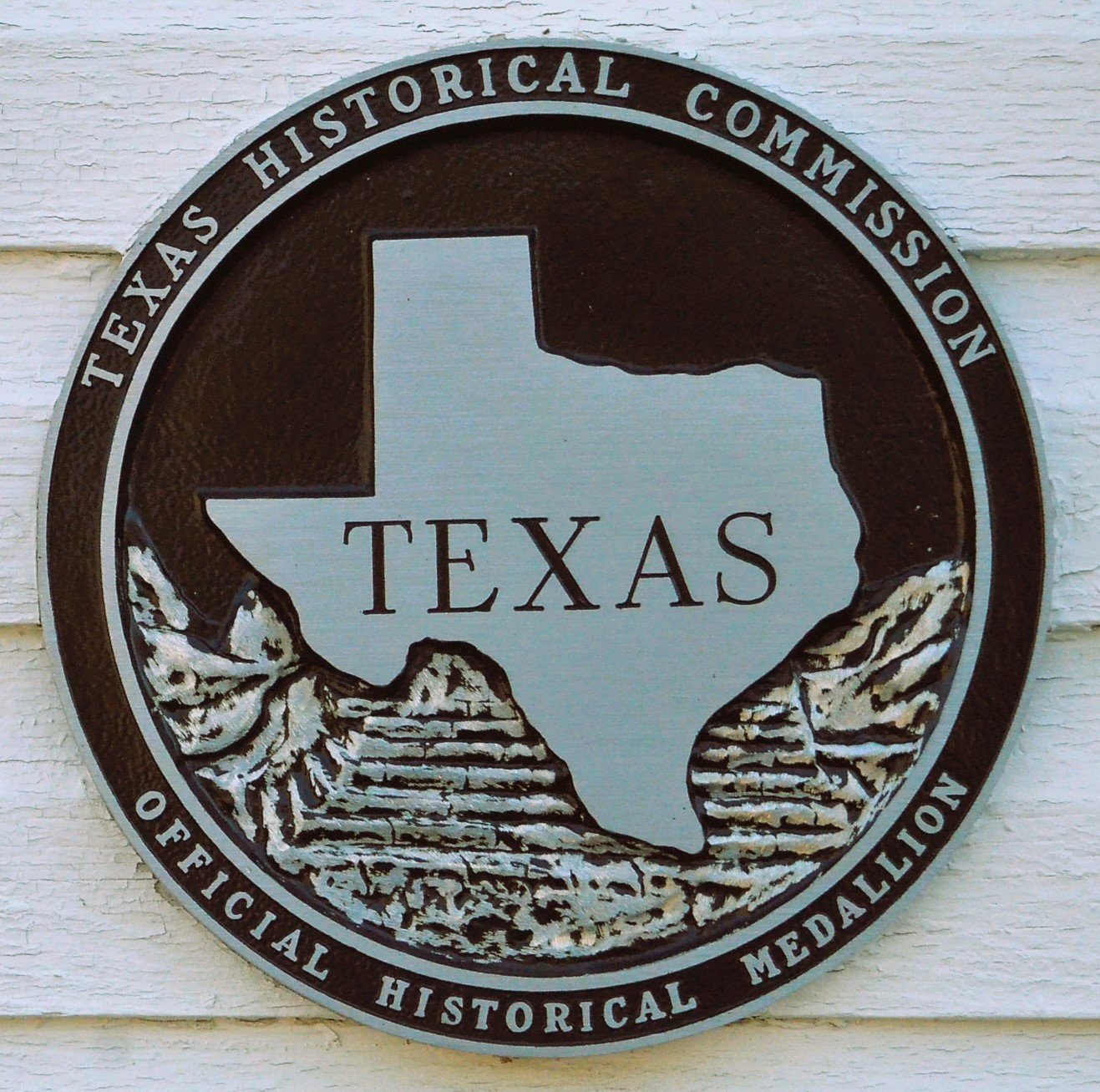
By Kate Stow
At the onset of the 20th century, the education of African Americans in the United States was in need of much improvement. This was due, in part, to: inadequate supervision; improper housing and lack of adequate equipment; the failure of local school officials to employ competent teachers and to provide essential equipment and supplies; and irregularity of attendance. In many counties and districts, schools for African Americans were inadequately supported; their terms too short for efficient work; teachers were not prepared well enough for the work; classrooms were overcrowded and lacking in essential equipment and supplies; and many of the schools were housed in unsuitable buildings.
But all that changed in 1912 when an unlikely hero gifted $25,000 to Booker T. Washington. Together, they changed the country.
The Jewish Fairy Godfather
Born in 1862 of German-Jewish immigrants, Julius Rosenwald was a high-school dropout in Springfield, Illinois. He began work at the age of 17 in the clothing business, before joining Sears, Roebuck and Company in Chicago in 1897. In 1909, Rosenwald became the president and chief operating officer of the world’s largest retailer.
Rosenwald believed that America could not prosper “if any large segment of its people were left behind,” so, as his wealth grew, he began donating money to a number of organizations that helped the less fortunate. One of the schools benefiting from the philanthropist’s generosity was Tuskegee Normal and Industrial Institute in Tuskegee, Alabama, now Tuskegee University. Booker T. Washington, the eminent black leader and educator, was the founder and principal of Tuskegee, which emphasized industrial education.
In 1912, Rosenwald gave Tuskegee $25,000 for a black teacher-training program. Washington persuaded Rosenwald to let him use a small portion of it for a pilot program to build six school buildings in rural Alabama. Two years later, Rosenwald made a $30,000 gift to construct 100 rural schools, followed by later gifts for another 200 schools.
The Julius Rosenwald Fund was organized in 1917 to make and oversee the matching grants, which varied based on the number of teachers to be employed at the school. They ranged from $500 for a one-teacher plan to $2,100 for a school with a capacity of 10 or more teachers. The communities where the schools were built had to contribute cash and in-kind donations of material and labor to match the grant.
Communities all over the South organized committees to find and buy the school site, cut lumber, haul building materials, and help construct the building. Church congregations and fraternal lodges held fundraisers; farmers donated the proceeds from an acre of cotton or from selling a number of chickens. Additional funds came from white donors, but the largest source of funding was tax money.
Designed by architects who specialized in school design, the plans used banks of large, double-hung sash windows to maximize natural lighting, essential in rural areas without electric service. They also included provisions for good ventilation and sanitation. Designers specified room sizes, blackboard and desk placement, and colors of paint. The buildings’ exteriors were simple and functional. The interiors were orderly, clean, and bright.
Sliding doors and removable blackboards in the smaller schools allowed the space to be opened up for community gatherings. Some larger schools had separate meeting rooms, auditoriums, or gymnasiums for gatherings, allowing the schools to become community centers, as well as educational centers.
Some communities had no provision for housing teachers. In those, grants and plans for “teacherages” — teachers’ houses — were provided. In some cases, a room for teaching shop class was part of the basic school building. For some larger schools, a separate grant provided for a detached shop building.
Between 1913 and Rosenwald’s death in 1932, more than 5,000 schools were built. Of the 527 built in Texas, the following were in Cass County: Alamo – 1921-22, four-teacher, two-room shop, plan #400; Atlanta – 1922-23, four-teacher, plan #400; Bethlehem – 1925-26, three-teach, two-room shop, 3-B; Beulah Courtland– No data; Bryan’s Mill – 1927-28, one-teacher, plan #1-A; Duncan – 1921-22, three-teacher, plan #3-B; Fairview – No data; Floyd Valley – no date, four-teacher; Gethsemane – 1924-25, three-teacher, plan #3; Hughes Springs – 1924-25, three-teacher, plan #20; Lanier – 1927-28, four-teacher, plan #400; Leek Creek – no date, four-teacher, no photo; Linden – 1926-27, two-teacher, plan #20; Moores Branch – 1927-28, one-teacher, plan #1; Mt. Olive – 1930-31, three-teacher, library, no photo; Mt. Zion – 1927-28, two-teacher, plan #20; Perfection – 1925-26, four-teacher (burned 1926), plan # 400; Pleasant Hill – 1925-26, two-teacher, plan #20 (school remains); Pleasant Valley – 1923-24, one-teacher, no photo; Rambo – 1927-28, four-teacher, plan4-A; Roach – 1930-31, three-teacher, no photo; Rocky Point – 1927-28, two-teacher, plan #20; Spring Hill – 1924-25, two-teacher, plan #2-C.
Upon his death in 1932, Julius Rosenwald had inspired, guided, and partially funded the construction of 5,357 educational buildings across the South: 4,977 schools, serving an estimated one-third of the region’s rural black schoolchildren, 217 teachers’ homes, and 163 shops. Collectively, 663,615 black schoolchildren in 15 states attending classes in Rosenwald schools. Texas alone received 527 buildings in 52 counties, most of them in the eastern half of the state: 464 schools with a 57,330-student capacity, 31 teachers’ homes, and 32 shops.
Of the 527 buildings in Texas partially funded by the Jewish fairy godfather from Chicago, about 30 still-existing structures had been identified. Four of those have been listed on the National Register of Historic Places; they are: the Sweet Home Vocational and Agricultural High School south of Seguin; the Lockhart Vocational (Carver) High School; the Garland Community School Teacherage, a five-teacher house near DeKalb in far northeast Texas; and the Pleasant Hill School near Linden in Cass County.
When a 1954 Supreme Court ruling declared segregation in education unconstitutional, Rosenwald Schools became obsolete. Once the pride of their communities, many were abandoned or demolished.
The Cass County Connection
The Pleasant Hill School is located just Northwest of Linden, Texas, on FM 1399. The heart of the community is centered the Pleasant Hill Missionary Baptist Church and was organized in the early 1840’s by Reverends C.C. Clark, Charlie Love, Matt Ellis and W.H. Whiten. The first meeting place was a Brush Arbor.
The total cost of construction for the Pleasant Hill School in 1925 was $3,450. The land upon which it was built was donated by Quitman Warren, Sr. His granddaughter, Sharon Pruitt, was among the last graduating Eighth-grade class in 1965, and she lives just up the road from the schoolhouse.
Today, the building serves as a meeting place for the Pleasant Hill Quilters Club, which Pruitt is part of. These friends gather for a weekly quilting circle where they can keep alive the art of the railroad quilts, a system of quilts used to guide escaping slaves.
The Underground Railroad, a vast network of people who helped fugitive slaves escape to the North and to Canada, was not run by any single organization or person. Rather, it consisted of many individuals — many whites but – predominantly black — who knew only of the local efforts to aid fugitives and not of the overall operation.
The Pleasant Hill Quilters have carried the tradition by educating the community about how the historical signal system worked. In addition to educational programs, the group makes and sells quilts to the public. They also book performances of the Underground Railroad Quilt presentation.
The group, led by Flo Stevenson, includes many other women that attended school in the building. Ether Jewell Blaylock (Class of 1957) recalls helping her Momma in the kitchen with lunch. Other members include: Volena Allen, Alvis Dosey, LaJoyce Flanagan, Vanice Gaines, Genell Jackson, Oteria McDaniel, Joyce Norman, Eunice Pruitt, Robbie Pruitt, Vernelle Richardson, Mary Shurn and LaWanda Warren.
Recently, the group was visited by Texas Country Reporter for Season 51, Episode 8 which aired in October 2022. Not long afterward, they were contacted by Jim Norcross of Whitney, Texas. He donated his late wife’s long-arm quilting machine and supplies to the group.
The Pleasant Hill School is located at 2722 FM 1399, Linden, Texas 755563. It is listed on the National Register of Historic Places. For more information: www.pleasanthilltexas.org or 903-756-7774.
